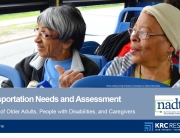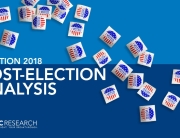In recent years, there has been much discussion on the ways we, as researchers, can keep our respondents more engaged in quantitative studies- trying to find the secret sauce into mitigating drop-off rates and reducing the amount who carelessly speed through surveys. We’ve responded, in turn, by making our surveys more interactive, efficient, mobile-optimized, etc.
But what about qualitative research?
We’ve all seen it: the respondents who begrudgingly drag themselves into the focus group room, looking to collect their cash, counting down every millisecond until they can get back to anything else. For some, the thought of spending two hours in a focus group seems daunting and scary, and it’s our job to keep them engaged, and on topic, so that we can, in turn, deliver the best strategic insights for our clients.
Given that the purpose of focus groups is to tap into emotion–and understanding that it’s not natural for people to feel comfortable talking in a room full of strangers–how do we ensure a lively discussion? Of course there’s no one sure-fire way that works for everyone, but here are some favorites from a decade of experience in the field.
1) Don’t be afraid to give homework: Are you going to be talking about communications behavior? Have them create a collage about the different ways they communicate with their friends, family, and colleagues. If the groups are about media habits, have them create a media diary where they write down their TV/radio/internet habits over a certain period of days. Assigning homework allows respondents come to the room already warmed up; it also increases self-confidence by beginning the discussion with a topic they’ve already put some thought into.
2) Use metaphor elicitation exercises: In the marketing research world, metaphor elicitation techniques are designed to get at hidden knowledge or “to get at what people don’t know they know.” For this, I use the Visual Explorer cards, a set of images, designed to represent a wide range of potential thoughts and feelings. It creates a visual vocabulary by which respondents can use an image to project their thoughts and emotions about the topic at hand. You’ll hear things like, “I chose an image of a man on a tightrope. I like that this company is risk-taking with innovative products, but their frequent changes of leadership makes things feel shaky to me.” This tool is particularly powerful when discussing brand identity and loyalty. While I’ve seen all kinds of respondents react very favorably to this exercise, it’s a great way for quiet, more introspective minds to really shine.
3) Ensure your online groups have several ways to foster group interaction: As the traditional focus-group gives way to qualitative research done increasingly more online, webcam-enabled online focus groups have become effective supplements, when done right. At KRC, we’ve been utilizing innovative tools and platforms to ensure they are just as effective (and interactive) as in person focus groups- with the added benefit of convenience (for both respondents and observers) and geographic diversity. Mechanics aside, it’s important that our discussion is just as engaging as it would be in-person. There are several ways that we can do just that:
- Show and Tell: Use the respondents’ natural setting to your advantage. Is your conversation about ways to stay organized at the office? Show your workspace! Are you talking about things you use on a daily basis to manage your health? Hold up your favorite tools!
- Whiteboard Exercises: As moderators, we love using easels for brainstorming exercises, and they can be leveraged in online groups, too. We use a platform that allows a moderator to draw on a whiteboard, showing up in real time for the entire group.
- Quick Polls: By programming a few polling questions into the online interface, we can get a quick read of the room. We can keep the answers visible to only the moderators and observers or we can display the results in the aggregate to the entire group. It creates a safety net to anonymously provide answers they may not feel comfortable saying aloud as well as allow us to craft relevant follow-up probes, e.g. “It actually looks like none of you are familiar with this term, here’s a definition so that we can all get on the same page. What are your reactions now?”
- Projective Exercises: It’s easy to modify our metaphor elicitation exercises to work in an online setting by uploading visuals and/or directions and displaying them to the group. It provides an opportunity for respondents to work independently, then share as a group, and debrief together on the themes they are hearing.
By leveraging these best practices in qualitative research during the data collection phase, we are continually making sure that we have our client’s objectives at heart through all phases of the research process.
Nothing makes us happier than when an initially curmudgeonly respondent circles back that the end of the group and says, “you know, that was ACTUALLY fun” or “I can’t believe it’s been 2 hours already.” Of course, our main objective isn’t to entertain, but when you have a group of folks who feel encouraged to participate using a variety of ways to make them feel comfortable, and you can manage that conversation effectively, you are guaranteed to come out of the research with plenty of great insights for your client. Then it’s onto the hard part- figuring out what it all means!









